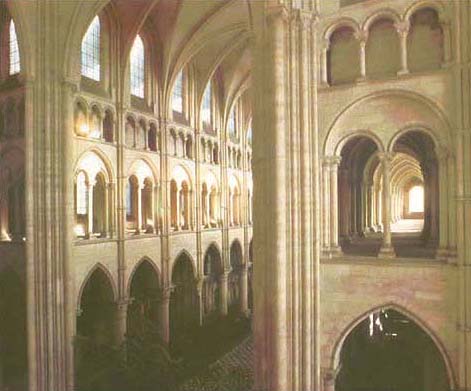
Structure

This collar of faience beads was excavated from the tomb of Tutankhamen at Thebes and is from the Amarna period (1379-1362 BCE) (Lois S. Dubin, The History of Beads. Harry N. Abrams, Inc., New York 1995, 15). It shows a kind of structure that I consider typical of the human mind. It is a universal and often anonymous form of artistic expression not affected by certain narcissistic aberrations of the post-romantic West. Wherever we look, and in whatever time, we find artists seeking optimal patterns of repetition and variation within harmonious ensembles of part and whole.
In each row of this collar, the beads themselves provide the basic pattern of iteration. But also this basic pattern itself is iterated, namely at the next "higher" level, in the successive rows of differently colored beads. The colors of each batch are uniform, except of the innermost ring, in which the beads are further structured in patterns of three, each group with a different color. In other words, we see repetition and variation both of the basic structures (the beads) and the meta-structures (the rows of beads).
Iteration and variation within parts and among wholes made of those parts is not only found in the decorative arts but also in practically all music traditions of the world. Repeated and varied musical motifs are grouped to larger wholes, such as phrases, and those phrases are themselves repeated and varied. Still higher up in this hierarchy, we find entire sections or compositions repeated and varied (da capo forms). We find such principles from Western classical music to the drum beats of Africa to the bamboo flutes of the Salomon islands at the borders of the Pacific.
I see no major difference between the design principle of the Egyptian necklace we started out with and the design of a Gothic cathedral like the one in Laon, built in an entirely different part of the world (France) and started in an entirely different time (1165 CE, more than 2500 years after the Egyptian necklace!):

Instead of 5 rows of beads, we have 4 rows of pillars with arches here (including the top part with the windows). Within each row, the pillars with arches are repeated (like the beads). Furthermore, the "higher-order" motif of a row of pillars is itself repeated and varied (like the rows of beads).
These are only a few illustrations of the literally millions that could be given of the same principle and the big question is why such a remarkable design principle is universal among humans and not at all found even among our closest relatives the great apes. Why do people from all different cultures and times seek aesthetic satisfaction in the same way, thereby forming a living denial of the postmodern myth that humans are endlessly malleable and arbitrarily different in their tastes?
I believe the answer must be sought in the unique and innate mental make-up of us humans, as is most clearly attested by the universal properties of our language. Words can be compared to the beads and pillars in our examples, and phrases and sentences to the "higher-order" rows of beads and pillars. Long before we decorated ourselves and our most prized possessions and long before we built cathedrals, nature taught our kind (via our genes) to organize sounds into words, words into groups of words (phrases) and groups of words into sentences. The patterns are really of the same kind and we organize them, repeat them and vary them within our sentences all day long, without being aware of the structural beauty imposed by our minds.
((c) 1980 picture Laon: Orbis Publishing Limited (Michael Raeburn, ed., Architecture of The Western World. Crescent Books, New York, 1980).